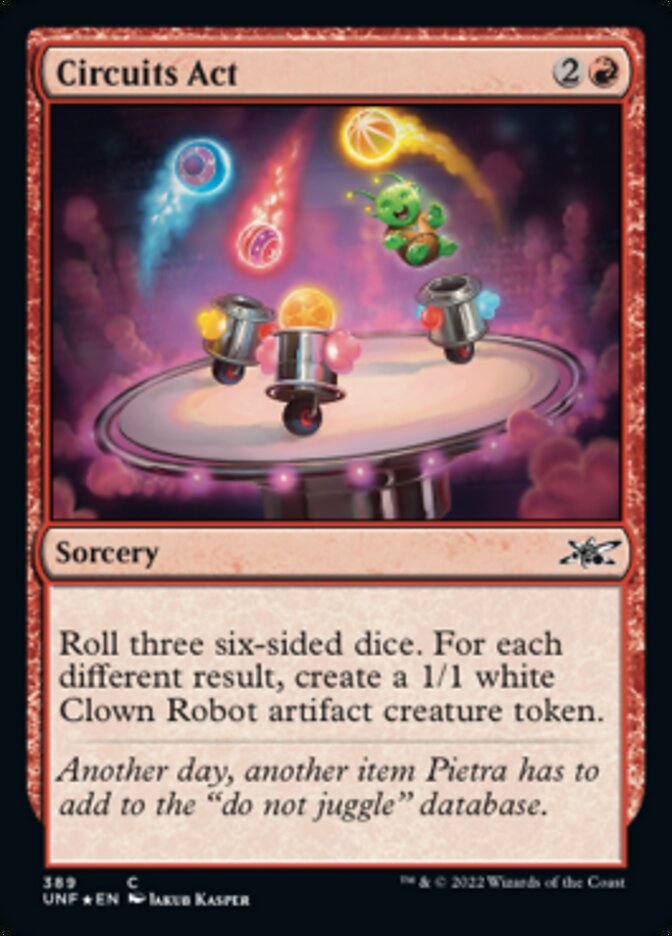
Circuits Act {2}{R}
Sorcery
Roll three six-sided dice. For each different result, create a 1/1 white Clown Robot artifact creature token.
Another day, another item Pietra has to add to the "do not juggle" database.
Details
- Artist: Jakub Kasper
- Collector Number: 389
- Available only as foil
- Promo: boosterfun, galaxyfoil
- Rarity: common
- Released: 2022-10-07
- Set: Unfinity
Legalities
- legal Commander
- legal Duel Commander
- legal Legacy
- legal Pauper
- legal Vintage
Rulings
- 2022-10-07 Each die is identified by the number of faces it has. A six-sided die is a die with six equally likely outcomes: 1, 2, 3, 4, 5, and 6. The roll must be fair. Although physical dice are recommended, digital substitutes are allowed except in cases where the physical die is required for the effect.
- 2022-10-07 For example, if you rolled 1, 4, and 4, you'd create two Clown Robots. If you rolled triples, you'd create one Clown Robot.
- 2022-10-07 If a die is rerolled, the original roll essentially never happened: it doesn't cause any abilities to trigger, and no effect that cares about die rolls will consider it.
- 2022-10-07 If an ability triggers "whenever you roll a die," it will trigger whenever you roll any die, including the planar die. This is a change from previous Un- rules. Some abilities use the result to determine part of the effect. If you get a non-numerical result (currently just the planar die, but the future is long), that part of the effect won't do anything.
- 2022-10-07 Results can be numbers not ordinarily possible on a six-sided die. Spells like Scooch can change the result to 0 or 7, for example.
- 2022-10-07 Some effects may modify the result of a die roll. This may be part of the instruction to roll a die, or it may come from other cards. Anything that references the "result" of a die roll is looking for the result after these modifications.
- 2022-10-07 Something in the game must tell you to roll a die. If you roll a die for any other reason (to simulate a coin flip, to choose pizza toppings, to create alternate timelines), that roll doesn't count.